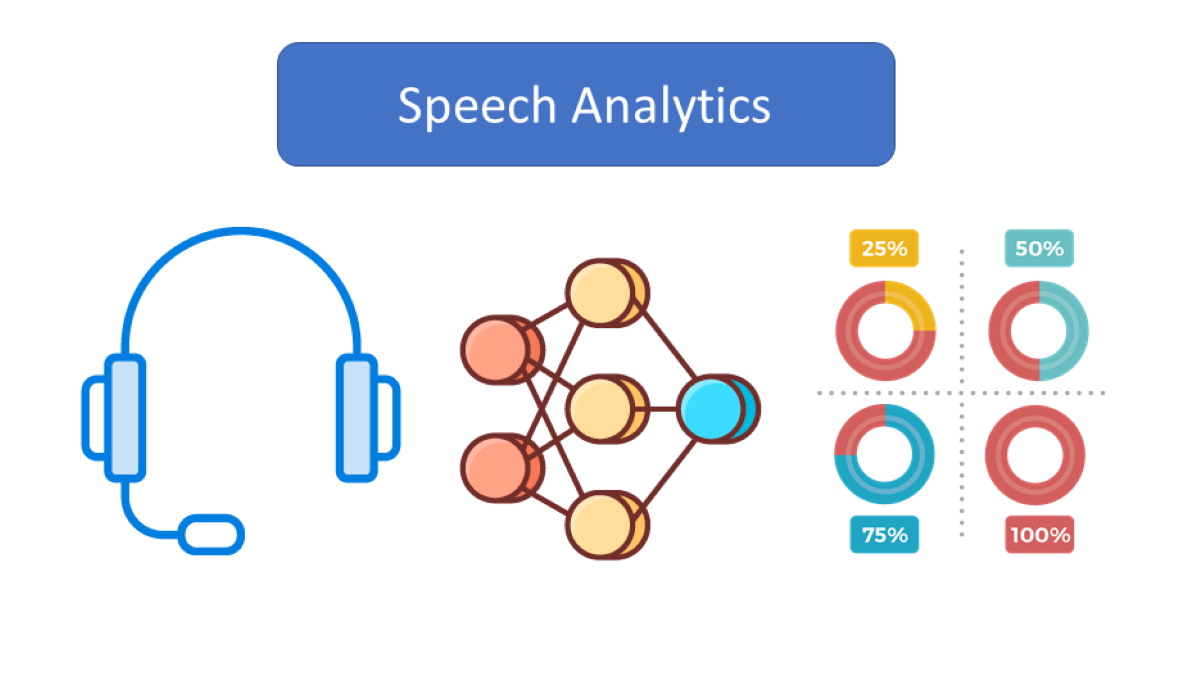- U.S.A. : 1 (470) 655-6318
- Brasil : (+55) 11-97506-0418
- Speech Analytics
- Dic 14
10 Unique Use Cases for Speech Analytics

Original article available here.
10 Unique Use Cases for Speech Analytics
Speech analytics is evolving to have use cases not yet thought of. For those of you who use speech analytics and want to expand the ROI for them, this is for you. It is a unique tool that has become more and more accessible and less expensive.
1. Proactive Customer Service
For so many years, customer service was reactive. You would react to certain complaints or compliments, bring it to marketing, or finance, or product, and still, they might shoo you away. Now we can quantify product issues, see what percentage of callers are complaining, you can fix the issue, and inform your customers proactively of any issues you might have.
2. Rewarding Associates for Great Sentiment
You should be incentivizing and rewarding your associates for being patient and friendly on calls. Not enough centers do this and it baffles me. Speech analytics can track proper word usage, sentiment scoring, silence, and hold time to analyze to make sure a rep is treating customers properly (and vice versa!). Give credit where credit is due, and incentivize with raises or cash to keep morale and motivation up.
3. Generating Marketing Data
Here we can collect product and price information. No longer are we looking at serving the customer with our call center, we are collecting that big data and sourcing it. We are able to go back to marketing and say, “38% of your customers say your product is too expensive” for example. This way we can make marketing decisions based on what the customers say first hand, instead of doing countless surveys.
4. Finding Out Why
When you watch the customer sentiment trends, you can start to understand the “why’s” of your data. Using keywords to match your trends can help you understand what specific problems you might have.
5. Noting Frustration
You could have a caller who is very happy with the service that they are getting, but for example, is annoyed with a certain fee they were charged with. They might really like the company they are choosing to purchase a product or service from, but have small frustration points that are difficult to separate out. Speech analytics can help you build an entire roadmap of the customer’s journey, to continue to pinpoint trending problems with your product or service.
6. Learning What the Real SLA Variance Should Be
I have received pushback before from using a blanket statement and saying that the benchmark SLA should be 80/30. (80% of calls should be answered in 30 seconds or less) It varies by industry and is not necessarily true. SLA’s are really based on the level of service that a group of customers are willing to settle for.
Lets break that down.
Company A has an SLA of 80/30, with a customer sentiment score of 77%. So, 77% of callers leave with a positive sentiment. Company B has an SLA of 80/60, but their customer sentiment is 76%, only one point lower. Using this information, we can staff fewer associates for Company B’s program because their callers are willing to wait longer for service without it affecting their sentiment.
7. Tracking Silence
Using speech analytics we can determine how much silence a call contains. Maybe there is a soft skill that your associate does not have, or they are putting people on hold or mute more often than necessary to ask questions or research a problem. This way, we can tell if there is an issue with a specific agent, and continue to educate them.
8. Fraud Protection
You can track specific if/then statements that get said by customers to see if what they are asking for is allowed or not. For example, a type of question that could get flagged for potential fraud is if a customer asks for a new debit or credit card, and they need to change their address. You can also input keywords or phrases to flag conversations for potential fraud without the agent having to look out for those things manually.
9. Tracking Keywords & Competitors
Speech analytics can also be used to track specific keywords and the names of competitors to drive competition. Using this method of analysis, you can further understand what customers want from your product or service, and how your product or service might be better or worse than your competitors’.
10. Expanding Service to Other Channels
I understand that keeping quality high via chat and email channels can be much more difficult than through voice calls. You can use speech analytics to extend the quality of your service to neglected channels. Quality, analytics, keywords, and raw transcriptions get fed directly to your speech analytics platform. This way, data can be more accurate.
This list is going to continue to grow as new releases come out from other analytics platforms.
Search
Recent Posts
- How AI Can Transform Contact Centers’ Unstructured Content
- Google Brain Introduces Symbolic Programming + PyGlove Library to Reformulate AutoML
- How Call Centers Can Thrive by Successfully Managing the Unexpected with AI
- 10 Unique Use Cases for Speech Analytics
- How AWS is staking its claim on tomorrow’s contact centers
Archives
Categories
Subscribe to Our Blog
I want the latest update in...
Latest Post
How AI Can Transform Contact Centers’ Unstructured Content
- marzo 18, 2021
- [rt_reading_time postfix="mins read" postfix_singular="min read"]
Google Brain Introduces Symbolic Programming + PyGlove Library to Reformulate AutoML
- febrero 5, 2021
- [rt_reading_time postfix="mins read" postfix_singular="min read"]
How Call Centers Can Thrive by Successfully Managing the Unexpected with AI
- enero 8, 2021
- [rt_reading_time postfix="mins read" postfix_singular="min read"]
10 Unique Use Cases for Speech Analytics
- diciembre 14, 2020
- [rt_reading_time postfix="mins read" postfix_singular="min read"]





Recent Comments